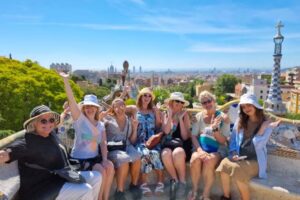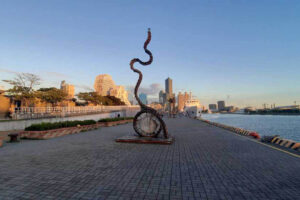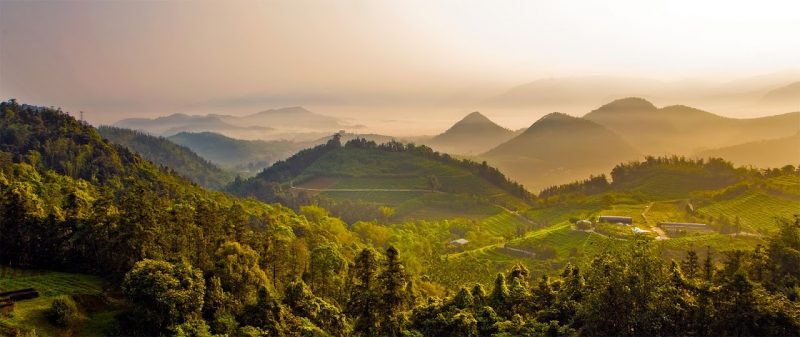
In a quiet Taiwan Temple, the Author Discovers Why He Travels
By Paul Shoul
GoNOMAD Staff

Taipei. I am sitting on a stone floor inside the Lung Shan Temple in Taipei. Though crowded like the rest of the city, each person here seems at peace, alone with their private conversations with the Gods they have come to consult.
Tears again came to me as I let my camera fall from my eye to just sit and be. Looking up from my thoughts, an old man catches my attention and gives me a knowing smile; he has seen inside me.
I did not feel invaded, as I know some people must when I peer at them with my camera in their private moments.
I think to myself. “This is why I travel.”
I did not think I would ever have the chance to return here and if these short moments were all I would be able to spend in Taiwan it would be well worth the 18 hours of flying to get here. This is just the beginning of my journey.
Lung Shan is an island of peace and the past in the middle of the modern frenzy that is Taipei. As I walk out of the gate into the city, the sights and sounds of progress overwhelm me. It is like paddling back into the flow of a swiftly moving river from the quiet waters behind a rock, the current takes you away. You cannot fight it; your only safety lies in proper navigation.
Whirlwind Trip

I was in Taiwan for what would be a whirlwind trip around this place that I have come to love. The last time I was here, I only had the chance to see the major cities but Taiwan is so much more than the industrial mother giving birth to the electronic gadgets of the world.
As I was about to see, it is a tropical island of deep lakes, cloud-covered mountains, beautiful beaches, and natural wonders.
The next day we departed on Taiwan’s pride and joy, the new high-speed train that runs almost the full length of the island (208 mi) from Taipei to Kaohsiung city. The train and the station, like all public places in Taiwan, are clean and efficient.
Trains leave every 15 minutes and cost around $40 to the end. It feels like an airplane as you whip past fish farms and rice paddies at speeds up to 217 mph condensing what was a 4.5-hour conventional train (50 mins by air) ride to 90 minutes.
The seats are comfortable with plenty of legroom. Every seat has a personal music system and outlets for all your newly purchased Taiwanese electronic necessities. Meals can be purchased for under $5.00.

We disembarked in Taichung and continued our journey by bus to the center of the island and Sun Moon Lake, the largest in Taiwan.
Jeff Chen, general manager of Hotel Del Lago on the shores of Sun Moon Lake, has an infectious enthusiasm. He tells me this is one of the Top 10 destinations in all of China. I see no reason to doubt him; it is indeed beautiful here.
Terraced tea farms cover the sides of mountains rising from the mist of the lake’s surface piercing the clouds. Here and there a temple is nestled in the view. Fishermen cast their wide nets into the lake. Chen arises every morning and watches the lake wake up with the sunrise, grateful to spend another day together.
Later that day when we walk high into the mountains on the Mount Molan trail, one of the many hiking and biking trails in the area to view the lake from above. Chen introduces me to a tree that looks likes a woman.
“You just have to use your imagination to see these things,” he says.
“Extraordinary people need extraordinary stories,” he commences to tell me one. “One morning as I was watching the lake wake up, I saw that one side of the sky was totally filled with black clouds and the other was completely filled with white.
The two sides chased each other around” He made exaggerated circling motions with his hands while telling the story. “When they finally met in the middle, that’s when the storm came! Just like marriage!”
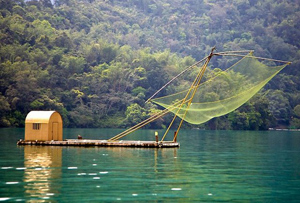
I wonder how this bodes for the young couples who flock here to consummate their union. It is also known as “Honeymoon Lake,” throughout the small town there are “Love hotels” and I even noticed a “Love umbrella” stand. If their unions are anywhere as devoted as the lake and Jeff’s is, they will all have long and happy lives together.
The next day we made our way south to Chiayi county and Alishan (Ali Mountain), a magical world high in the clouds. It is the perfect environment to grow its famous High Mountain Oolong tea. Though I am an avid coffee addict I came home with a suitcase full of the stuff.
It is sweeter than most teas, fights the signs of aging, burns fat and is full of antioxidants. I am drinking a cup now as I write. As you ascend along Highway 18, the steep mountainsides are covered with deep green tea bushes dotted with women tea pickers in their traditional colorful robes and classic cone shaped sun hats.
The views are spectacular. I stopped to watch the tea-making process at Tian Shin and ventured into the rows of tea pickers at the Tian long tea garden to photograph them. I discovered that as usual, nature is a lot softer from a distance. The tea plantations are amazingly steep, terraced similarly to the Douro wine-growing region of Portugal where no machine can go and all work must be done by hand.

It is hard to keep your footing on the loose rocks around the roots, let alone work as hard as these women do picking all day. What look like silk robes from afar are really layers of thick cotton to protect them from the sharp plants and the extreme daytime temperature changes that the tea thrives on.
Alishan Forest Railway
Higher up the Mountain is the Alishan Forest railway one of only three remaining alpine railways in the world, originally built by the Japanese to log cypress trees during their occupation of Taiwan.
I walked some of the many trails that take you through the forest and to the sacred tree of Alishan that some believe is over 3000 years old.
It’s very “Lord of the Rings” up there, peaceful with a spiritual air. There is a temple, a museum and also a somber monument built by the Japanese after their occupation as an apology to the forest for the destruction of the giant cypress.
That evening we stayed at the Long Yun Holiday Farm. It had been a long day, but who can resist a rustic bar in the middle of a bamboo forest, a few bottles of infamously strong Chinese booze, scratchy disco music and an enthusiastic owner who insisted we stay up, drink, dance and make mochi, or sticky rice with a lot of spring in it.
This is how it’s done. First get a large wooden pot and a mallet about three feet tall and thick on both ends. Place a clump of sticky rice in the pot and proceed to beat the living hell out of it for about an hour. This must be done with two very drunk people beating it at once and leaping into the air or it will not work. The rice forms a thick sticky paste that when rolled into balls and covered with cocoa powder is delicious.

The next day we headed south to the coast and spent the night in Kaohsiung, Taiwan’s oldest and second largest city. It is the world’s third largest container port, poised for even more growth.
In July the 2009 World games will be held here in what will be a futuristic solar-powered stadium, the first major building to adhere to the new “green building code.”
When not in use for the games it will sell solar back to the grid. The whole city is gearing up for the green future. A new metro system, just a five-minute walk from the Games connects the stadium to the high-speed train from Taipei.
I like this city. There are nearby beaches, great night markets and The “Love River” running through the middle of it (named after two lovers that jumped to their death). Prices that are half of what they are in Taipei.
That day during lunch, at the Taiwan coffee shop, with a little coaching by my Taiwan friends I asked a waiter a simple question: “Ni Yor Yia Chin Ma?” By the gods, he smiled and said “yes” and returned with a toothpick. My first breaching of the Chinese language walls other than thank you and hello. A small victory, but I was thrilled. I cracked my friends up.
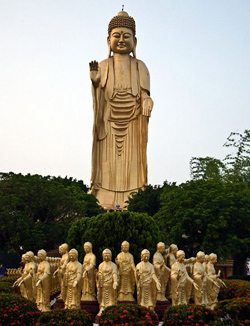
Kaohsiung is also home to Fo Guang Shan the largest Buddhist monastery in Taiwan and part of a worldwide belief. It is like Buddha Disneyland. The Buddhists I met are wonderful, peaceful people. I met a devoted monk who also had a fine sense of humor. The Monk who led us around was from Germany.
During a fairly deep conversation about the metaphysical world, I noticed that he was cracking a fair amount of jokes, so I asked him. “How many Buddhist monks does it take to change a light bulb? He looked at me and asked, “Is this a blond joke?”
I did not expect such up-to-date popular humor from a monk. It made me warm to the whole idea of their religion. “Just one, but the bulb really has to want to change.”
I like these guys. There are thousands of golden Buddhas lined up everywhere. The many different shrines amazed me with their complexity and grandeur. They exude confidence, symmetry and peacefulness. Overlooking the monastery is a 400-foot golden Buddha smiling calmly out to the world. This is a place that must be seen.
From Kaohsiung, we took the long road back to Taipei driving along the pacific Coast to on the way to our final destination Taroko Gorge. The road brings you through endless rice paddies in Taitung on the way to Hualien. The coastline is magnificent, complete with pounding surf and palm trees.
Taroko Means Beautiful
Taroko means “beautiful” in the language of the Truko tribe that named it, and it is. Part of the 92,000 acre Taroko National Park, the gorge was carved out of the mountain by the Liwu River. There are one after another incredibly steep marble canyons and waterfalls on a scale that rivals any other natural wonder that I have seen.
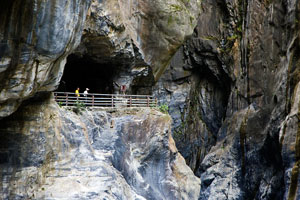
I took one of the trails along the river called the Tunnel of Nine Turns. Part of the old road is carved out of the rock with overlooks along the way jutting out over the gorge. The Central Cross Island Highway that winds through the park is a spectacular drive.
Fort Santo Domingo, one of the oldest buildings in Taiwan, built by the Spanish, then destroyed and rebuilt by Dutch after their invasion of the island in the 17th century, sits strategically on a hill overlooking the mouth of the Tamsui River, just outside of the throbbing behemoth that is Taipei Taiwan.
When I first arrived in Taiwan a week before, as fortune would have it I was seated at the governor’s table in the VR Garden Cafe at the fort. Roy Chou (Hsi-Wei Chou) is a distinguished man: politician accomplished painter, U.S.-educated and speaks perfect English. A renaissance Taiwanese man.
He was greeted warmly wherever we had walked together that afternoon in Danshui. People like him. He tells me that he is confused by George Bush’s decisions. I like him even better. His beautiful wife is equally intelligent and outspoken.

The food is an Asian-American mix in honor of our group of journalists. We are all laughing, sharing stories and debating the world. I am in travel heaven. It is then that I take my foot and firmly stick it my mouth. I ask a simple question that I ask to people all over the world when I travel who are you? In this case, what is a Taiwanese?
“It is such an unfair question,” they both say in earnest as they graciously let me off the hook and explain to me the seriousness of the question. Taiwan is divided by its relationship with China. News channels are talking politics 24 hours a day about who are and who are not are the real Taiwanese.
When Roy was considering his run for governor his father had told him that he would have trouble because he had been born on the mainland. He wants the economic and security benefits of a relationship with China and for Taiwan to keep its independent character.
Earlier that day I had asked the same question to Chiang Kai-shek’s great grandson Demos Yu-bou Chiang, a founder of the prestigious design group DEM. He is a thoughtful progressive person. He blames both political parties for polarizing tactics.
I cannot help wondering what it is like when your grandfather was the dictator who had ruled this country for 40 years with an iron fist. (And I think I have family issues!) He lays it out. He said that he has looked for Taiwanese culture for years but cannot find it.
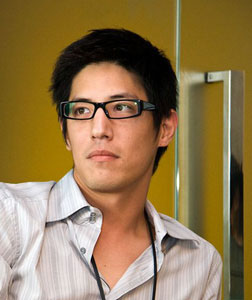
‘We are the leftover influences, fragments of those that have invaded us,” but when I ask him what are you? He answers without hesitation. “I am Taiwanese”. He is determined that the future is not just made in Taiwan but designed in Taiwan as well
These are the people that are now defining a new Taiwan. I realized from these conversations what I love about this country. Aside from the exotic frenzy cities and the natural beauty of the island, it is the Taiwanese people that have drawn me back here for the second time.
Taiwanese Food:
All of these hotels have outstanding restaurants with some of the finest food in the city and the largest breakfast buffets you will ever see.
I was treated to two feasts, one at the Silks House Restaurant at the Grand Formosa Regency complete with 23 Chinese dishes, including Marinated Jelly fish, Drunken Pork Peking duck, and an Ice volcano desert that was fantastic.
At the Pearlliang Chinese Seafood Restaurant in the Grand Hyatt, they have a tasting room where we tried the freshest sushi, dim sum, air-dried and Kobe beef toped with foie gras before another endless dinner of Szechwan prawns, stewed pork ribs with tea and grilled lamb.

Sun Moon Lake hotels:
Del Lago Hotel
No.101, Jhongshan Rd., Yuchih Township, Nantou County 555, Taiwan (R.O.C.)
Telephone: 049-2856688
Del Lago Hotel (in Sun Moon Lake)
.
Fensisia Hotel
Address: 23 Zhong Zheng Road, Sun Moon Lake, Yuchi Shiang, Nantou County 555, Taiwan. Tel: 049-2855500…
General information about the lake
Alishan Mountain hotels:
Long Yun Holiday Farm
Shihjhuo, Jhonghe Village, Jhuci Township
Telephone No.: 05-256221
www.long-yun.com.tw

My Landscape Hotel
No. 19-6, Longtou, Gongtian Village, Fanlu
(05) 2586-282
(05) 2586-282
Both have restaurants featuring traditional food.
Kaohsiung Hotels:
Splendor Hotel
NO.1, Tzu-Chiang 3rd Road
Kaohsiung City 802
Taiwan. ROC ?
TEL?07-5668000?FAX?07-5668080
Food:
The Splendor Hotel has fine food and one of the best breakfast buffets in Taiwan.
I also ate at The Miyamaru Japanese Restaurant and a little place called the Taiwan Coffee Shop. I have scoured the web but can find nothing for them online. If you go, try finding them; they were both excellent.
General information on Kaoshiung
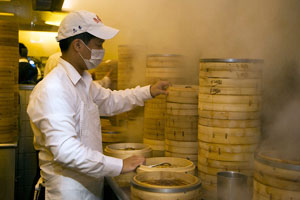
Taroko National Park Hotels:
Leader Village Taroko
No 231-1 Fushih Villa Sioulin Township, Hualien 972, Taiwan
886-3-8610111
Food:
Yuan Sen Applied Botanical Garden:
8 Shihyanchang, Mingfong Village, Beinan Township, Taitung County (089)570-011
On the way to Taroko along the pacific coast, this is an organic farm and restaurant featuring hot pots to live for.
- Everything is Better in Lisbon - March 1, 2024
- Exploring Gran Canaria in the Canary Islands - October 17, 2023
- Traveling Lanzarote: Hot Times in the Canary Islands - June 28, 2023


